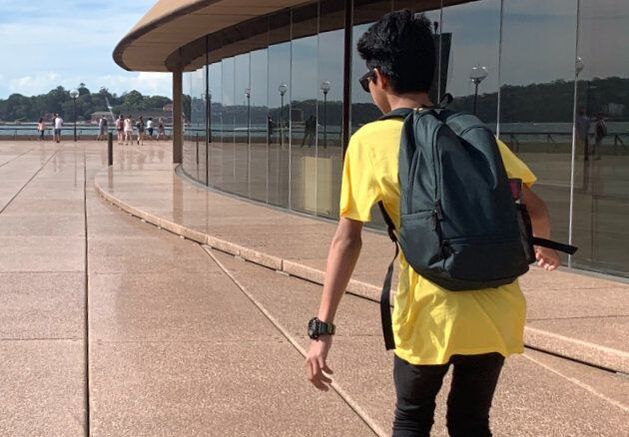|
47% of adolescents aged 15 years old in a recent multinational study reported having experienced back pain – much more common than you would think. Despite being a common condition among children, adolescents and adults, the etiology of back pain in children and adolescents is unknown. One of the most commonly cited causes of low back pain is loading/biomechanical factors, such as the amount of exercise one does, common physical tasks and the equipment used to complete them. Recently, groups like the American Academy of Pediatrics and The American Occupational Therapy Association have recommended that school bag weight not exceed 10 to 15% of the child’s body weight, otherwise they are at greater risk of low back pain..
When kids and adolescents carry around large books and equipment (particularly into high school), it’s not a stretch to think that backpacks are a potential contributing factor to back pain. When I was in high school, my mum paid all this money for a fancy ergonomically designed backpack to carry all my school equipment. The argument was that with a properly designed backpack, my small 13-year-old spine could handle carrying my school gear around without any excess strain on my back. But this wasn’t necessarily true, many days I came home with a sore lower back from the very back pack that was ‘designed’ to prevent it. Recent research on the matter seems to support the ‘hunch’ I had as a 13-year-old. In a recent review in 2018 of 69 studies with over 72 thousand participants in total, showed no convincing evidence that aspects of schoolbag use increase the risk of back pain in children and adolescents (1). Despite the assertions of various guidelines and statements that endorse specific weight limits and metrics for schoolbags – there appears to be no clear association between schoolbag (weight, size, design & method of carrying) characteristics and back in in children and adolescents. Schoolbag use just does not appear to be an important risk factor for back pain in children and adolescents. However, like all things in science, nothing is certain, and due to the lack of quality data and research into schoolbag size, weight, use etc – the authors of the paper remarked that the conclusion should be taken with ‘a grain of salt’, with more higher quality research needed to confirm the findings. But surely carry a backpack long enough and anyone is bound to feel a strain in their back? The only factor around schoolbag characteristics and use that was related to pain in the research was the perception of heaviness of the bag – but not the actual weight of the bag. This finding has interesting potential implications – depending on how you interpret it. I personally expect the difference to be associated with the level of capacity of the student to hold their backpack (arm and back strength, endurance etc), which then affects their perception of how heavy the bag is. All conjecture though. The authors of the review concluded that various professional bodies and clinicians that endorse or recommend specific backpacks do so without any good scientific evidence behind them. They aptly reaffirmed that It is important that such endorsements are made on the basis of firm evidence and free of financial conflict. So, when you next go to purchase a backpack for your child at school, worry less about the ergonomics – it doesn’t matter. This article was written by Oliver Crossley at POGO Physiotherapy in Australia.
1 Comment
Leave a Reply. |
AuthorThe therapists at SRVPT have a variety of backgrounds and are interested in sharing our knowledge with you! Check out their bios for more specific information. Archives
April 2024
Categories
All
|
|
San Ramon Valley Physical Therapy proudly serves the Alamo, Danville, San Ramon, Dublin, Pleasanton areas, along the 680 corridor.
© COPYRIGHT 2023 ALL RIGHTS RESERVED |


 RSS Feed
RSS Feed
